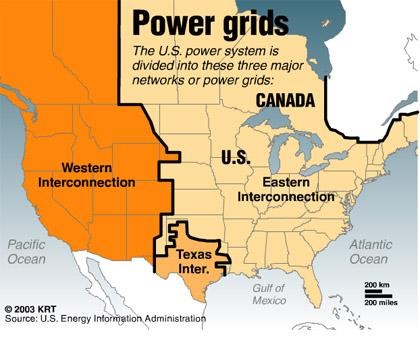
OK Energy Today August 9, 2018
Is it time for a convergence of the three separate power grids creating the U.S. electric transmission network? According to a recent article published by David Wagman in IEEE Spectrum, the results of a seam study finds considerable economic and engineering value in fortifying the connections to better distribute power resources around the country.
The study was conducted by researchers at the U.S. Energy Department’s National Renewable Energy Laboratory and presented last month at the TransGrid-X Symposium at Iowa State University.
The Eastern Interconnection grid is located east of the Great Plains. The Western Interconnection spans from the Great Plains to the Rockies and along the West Coast. A separate grid provides electric for Texas residents, where legislators prefer state rather than federal regulation.
The three grids interconnect at the seams. The new NREL study suggests the seams offer the weakest link along with considerations to bridge the gaps. Aging equipment and rapidly emerging technology must be factored into a grid consolidation.
The study concludes:
- “Substantial value” exists to increasing the transfer capability between the grids. Maintaining the status quo is not an option.
- Cross-seam transmission has a substantial impact on the location, size, and development of wind and solar projects.
- Cross-seam transmission enables substantial energy and operating reserve sharing on a daily and seasonal basis.
- There may be additional benefits and costs including enhanced frequency response and resilience to extreme events.
- More robust transmission ties could make low-cost and abundant renewable resources more widely available.
To review the 24-page NREL study results, click here.


